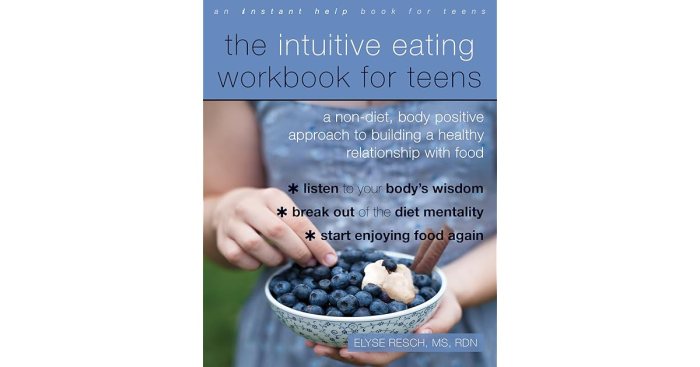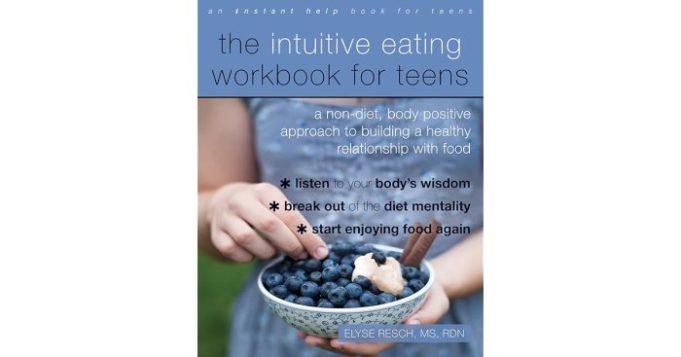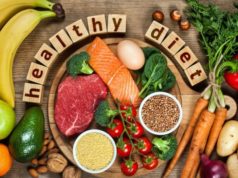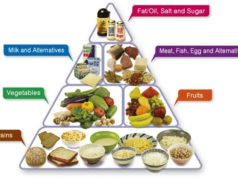How Not to Diet Book: A Guide to Intuitive Eating offers a refreshing alternative to the restrictive and often unsustainable approaches to weight management that have become commonplace. This book challenges the very notion of “dieting,” instead advocating for a mindful and compassionate relationship with food that honors your body’s natural hunger and fullness cues.
Through practical strategies and insightful advice, How Not to Diet Book empowers you to break free from the cycle of deprivation and guilt, fostering a sense of self-acceptance and a healthier, more fulfilling relationship with food. It explores the core principles of intuitive eating, mindful eating, and body acceptance, providing tools to navigate the complexities of food and develop a sustainable approach to well-being.
The Problem with Traditional Dieting
The allure of quick fixes and dramatic weight loss often overshadows the potential harm of traditional dieting. Restrictive diets, while seemingly promising, often lead to unintended consequences that can negatively impact both physical and mental well-being. This section delves into the common pitfalls of traditional dieting and its broader influence on our relationship with food and our bodies.
The Pitfalls of Restrictive Dieting
Restrictive diets often focus on eliminating entire food groups or severely limiting calorie intake. This approach can lead to various problems, including:
- Nutrient Deficiencies: Eliminating food groups can result in a lack of essential nutrients, leading to fatigue, weakened immune systems, and even long-term health complications. For example, a diet that eliminates all carbohydrates can lead to deficiencies in fiber, B vitamins, and essential minerals.
- Metabolic Slowdown: Severely restricting calories can trigger a metabolic slowdown, making it difficult to maintain weight loss in the long run. The body may enter “starvation mode,” slowing down its metabolism to conserve energy, making it harder to burn calories.
- Yo-Yo Dieting: Restrictive diets often lead to cycles of weight loss and gain, known as yo-yo dieting. This can be detrimental to overall health, potentially increasing the risk of heart disease, diabetes, and other chronic conditions.
- Negative Psychological Impact: The constant focus on food and weight can lead to feelings of guilt, shame, and anxiety. This can negatively impact self-esteem and overall mental health.
Common Diet Trends that Often Fail
Many popular diet trends promise quick weight loss but often fail to deliver sustainable results. These include:
- Fad Diets: These diets, often based on limited scientific evidence, emphasize specific food combinations or restrictive eating patterns. They often lack essential nutrients and can be difficult to maintain in the long run. Examples include the “ketogenic diet,” the “paleo diet,” and the “intermittent fasting” diet.
- Liquid Diets: These diets involve replacing meals with shakes, soups, or other liquid concoctions. While they can lead to rapid weight loss, they are often deficient in essential nutrients and can lead to fatigue, weakness, and nutrient deficiencies.
- “Magic” Pills and Supplements: Many weight loss products claim to burn fat or suppress appetite without lifestyle changes. However, these products are often ineffective and can even be harmful.
The Influence of Diet Culture
Diet culture is a pervasive social phenomenon that promotes the idea that thinness is ideal and that weight loss is a constant goal. It often emphasizes restrictive eating, body shaming, and unrealistic beauty standards. This can lead to:
- Body Image Issues: Diet culture can contribute to body dissatisfaction and disordered eating. It promotes a negative view of bodies that don’t conform to societal ideals.
- Low Self-Esteem: The constant focus on weight and appearance can lead to feelings of inadequacy and low self-esteem. This can impact mental health and overall well-being.
- Eating Disorders: Diet culture can create a climate that fosters eating disorders, such as anorexia nervosa, bulimia nervosa, and binge eating disorder.
The “How Not to Diet” Approach

The “How Not to Diet” approach, based on principles of intuitive eating and mindful eating, challenges the traditional diet culture and encourages a more holistic and sustainable relationship with food. This approach emphasizes listening to your body’s internal cues, honoring your hunger and fullness signals, and fostering a positive and non-judgmental relationship with food.
Intuitive Eating and Mindful Eating
Intuitive eating and mindful eating are two key principles that form the foundation of the “How Not to Diet” approach. These principles encourage a shift from external rules and restrictions to internal cues and awareness.
- Intuitive Eating: This approach emphasizes listening to your body’s internal hunger and fullness cues. It encourages you to eat when you are hungry and stop when you are full, without relying on external rules or restrictions. It also encourages you to eat a variety of foods that nourish your body and mind, without guilt or shame.
- Mindful Eating: Mindful eating involves paying attention to the experience of eating, without judgment. It encourages you to savor each bite, notice the flavors and textures of your food, and connect with your senses. It also encourages you to eat in a calm and relaxed environment, free from distractions.
Identifying and Addressing Emotional Eating Triggers
Emotional eating is a common phenomenon where people use food to cope with negative emotions such as stress, boredom, or sadness. Understanding and addressing emotional eating triggers is crucial for developing a healthy relationship with food.
- Identify Triggers: The first step is to identify the situations, emotions, or thoughts that trigger emotional eating. Keeping a food journal can help you track your eating patterns and identify potential triggers.
- Develop Coping Strategies: Once you identify your triggers, you can develop healthy coping strategies to manage them. This might involve engaging in physical activity, practicing relaxation techniques, talking to a friend, or engaging in a hobby.
- Practice Self-Compassion: It’s important to be kind to yourself when you experience emotional eating. Acknowledge that it’s a common behavior and that you’re not alone. Focus on moving forward with self-compassion and understanding.
Respecting Hunger Cues and Fullness Signals
Learning to respect your body’s hunger and fullness signals is fundamental to intuitive eating. It allows you to eat when you are truly hungry and stop when you are satisfied, rather than relying on external cues or rules.
- Pay Attention to Your Body: Take time to notice your hunger and fullness signals.
- Avoid Skipping Meals: Skipping meals can lead to extreme hunger, making it more difficult to listen to your body’s cues.
- Eat Slowly and Mindfully: Eating slowly and mindfully allows your body time to register fullness signals.
Building a Healthy Relationship with Food
Ditching the diet mentality and embracing a mindful approach to eating is crucial for cultivating a healthy relationship with food. This involves shedding the guilt and shame associated with certain foods, recognizing your body’s cues, and developing a positive self-image.
The “How Not to Diet” book emphasizes a holistic approach to weight management, focusing on building healthy habits rather than restricting food. A key aspect of this approach is understanding the role of exercise, and whether something like running is truly the best way to lose weight.
You can explore this question further in this article: is running the best way to lose weight. Ultimately, the book advocates for finding a form of physical activity that you enjoy and can sustain long-term, as this is far more important than simply chasing a specific weight loss goal.
Cultivating a Positive and Non-Judgmental Relationship with Food
The first step towards a healthy relationship with food is to break free from the restrictive mindset of dieting. Dieting often leads to feelings of deprivation, guilt, and shame, which can ultimately sabotage your efforts to eat healthily.
The “How Not to Diet” book encourages mindful eating and focusing on nourishing your body, rather than restricting yourself. This approach might lead you to question the difference between diet sodas like Diet Pepsi and Pepsi Zero, difference between diet pepsi and pepsi zero , and how they fit into your overall dietary choices.
Ultimately, the book emphasizes a balanced approach, and whether you choose a diet soda or not, it’s important to be aware of the ingredients and how they might affect your body.
- Embrace all foods. Instead of labeling foods as “good” or “bad,” acknowledge that all foods can fit into a balanced diet. This allows you to enjoy your favorite foods without guilt or restriction.
- Challenge negative thoughts. When you find yourself thinking negatively about food, challenge those thoughts. Ask yourself: “Is this thought helpful? Is it true? What would a friend say?”
- Focus on your body’s cues. Pay attention to your hunger and fullness signals. Eat when you’re truly hungry and stop when you’re satisfied, not stuffed.
- Practice mindful eating. Engage all your senses when you eat. Notice the colors, aromas, textures, and flavors of your food. This helps you savor each bite and appreciate the experience of eating.
The Role of Body Acceptance and Self-Compassion
Body acceptance and self-compassion are essential for sustainable healthy habits. When you accept your body as it is, you’re less likely to engage in restrictive dieting or unhealthy behaviors in an attempt to change it. Self-compassion allows you to treat yourself with kindness and understanding, even when you make mistakes or slip up.
- Practice self-love. Treat yourself with the same kindness and understanding that you would offer to a friend. Acknowledge your strengths and celebrate your accomplishments.
- Focus on what your body can do. Instead of focusing on your body’s appearance, appreciate its abilities. Celebrate the things your body allows you to do, like walking, running, dancing, or simply enjoying a delicious meal.
- Challenge negative body image. When you find yourself thinking negatively about your body, challenge those thoughts. Ask yourself: “Is this thought helpful? Is it true? What would a friend say?”
Activities that Promote Mindful Eating, How not to diet book
Mindful eating involves paying full attention to the experience of eating, engaging all your senses and appreciating the flavors, textures, and aromas of your food.
The “How Not to Diet” book emphasizes a mindful approach to eating, focusing on understanding your body’s signals and making sustainable choices. If you’re looking to lose weight while managing diabetes, it’s important to consider a diet specifically tailored for your needs, such as the best diet to lose weight for diabetics.
While “How Not to Diet” encourages intuitive eating, remember that following a structured diet can be crucial for managing blood sugar levels and achieving healthy weight loss.
- Eat without distractions. Turn off the TV, put away your phone, and focus solely on your meal. This allows you to savor each bite and appreciate the experience of eating.
- Slow down your eating pace. Take smaller bites and chew your food thoroughly. This gives your body time to register fullness and helps you avoid overeating.
- Pay attention to the flavors and textures. Notice the different flavors and textures of your food. How does it taste? How does it feel in your mouth?
- Engage your sense of smell. Take a moment to appreciate the aroma of your food before you start eating.
Creating a Sustainable Lifestyle: How Not To Diet Book
Dieting often feels restrictive and temporary, but a healthy lifestyle is about making sustainable changes that you can maintain long-term. This involves integrating healthy habits into your daily routine, making them part of your lifestyle, rather than just temporary fixes.
Finding Joy in Movement
Regular physical activity is crucial for overall health and well-being. Instead of viewing exercise as a chore, focus on finding activities you genuinely enjoy. This could be anything from dancing to hiking, swimming to yoga, or even just taking a brisk walk in nature. The key is to find something that motivates you to move your body and makes you feel good.
“When you find an activity you love, it becomes less of a chore and more of a joyful experience.”
Nourishing Your Body with Balance
Developing a balanced and nutritious eating plan doesn’t mean eliminating entire food groups or following rigid rules. Instead, it’s about creating a mindful and flexible approach to food that aligns with your individual needs and preferences. Focus on incorporating a variety of whole, unprocessed foods, including fruits, vegetables, lean protein, and healthy fats. Listen to your body’s hunger and fullness cues, and don’t be afraid to enjoy your favorite foods in moderation.
Prioritizing Sleep, Stress Management, and Social Connections
Beyond nutrition and exercise, other factors significantly impact your overall well-being. Adequate sleep is crucial for physical and mental recovery, allowing your body to repair and recharge. Stress management techniques like mindfulness, meditation, or spending time in nature can help reduce stress levels and promote relaxation. Lastly, strong social connections provide support and a sense of belonging, contributing to a positive outlook and overall happiness.
Addressing Common Challenges
Embracing a “How Not to Diet” approach can be incredibly liberating, but it’s also natural to encounter challenges along the way. Remember, change takes time and effort, and setbacks are part of the process. Here are some strategies to help you navigate common hurdles and build a more positive relationship with food.
Overcoming Food Cravings and Emotional Eating Triggers
Food cravings and emotional eating are common experiences, often stemming from underlying emotions, stress, or boredom. Recognizing your triggers and developing healthy coping mechanisms is crucial.
- Identify your triggers: Keep a food journal to track your cravings and the emotions or situations that precede them. This will help you identify patterns and understand what triggers your desire to eat.
- Develop healthy coping strategies: When a craving hits, try engaging in activities that distract you or address the underlying emotion. This could include exercise, meditation, spending time with loved ones, or engaging in a hobby you enjoy.
- Practice mindful eating: Pay attention to your hunger cues and eat slowly, savoring each bite. This helps you become more aware of your body’s signals and prevents overeating.
- Choose nutrient-dense foods: Opt for foods that are rich in nutrients and fiber, as they provide lasting satisfaction and help manage cravings.
Managing Social Pressure and Navigating Social Events
Social events can be challenging when you’re working on building a healthier relationship with food. The pressure to conform to societal norms can be overwhelming.
- Focus on your goals: Remember your reasons for embracing a “How Not to Diet” approach. Your well-being is paramount, and you deserve to enjoy food without feeling restricted.
- Choose your battles: You don’t have to say yes to everything. If a social event involves foods that trigger your cravings or make you uncomfortable, politely decline or suggest an alternative activity.
- Plan ahead: If you know you’ll be attending a social event, bring your own healthy snacks or meal to ensure you have options that align with your goals.
- Practice assertive communication: It’s okay to politely decline food you don’t want to eat. You can say something like, “Thank you for offering, but I’m already full.” or “I’m trying to be mindful of my food choices right now.”
Seeking Professional Support
Sometimes, navigating these challenges can be overwhelming, and seeking professional support can be incredibly beneficial.
- Registered Dietitians: A registered dietitian can provide personalized guidance on nutrition, meal planning, and addressing specific dietary needs.
- Therapists: A therapist can help you address underlying emotional issues that may contribute to unhealthy eating patterns. They can also provide strategies for managing stress and building a more positive body image.
Wrap-Up
By embracing the principles Artikeld in How Not to Diet Book, you can embark on a journey of self-discovery, learning to listen to your body’s signals and make choices that nourish both your physical and mental health. This book encourages a shift in mindset, moving away from the pursuit of a specific body size or shape and embracing a holistic approach to well-being that prioritizes self-care, intuitive eating, and a positive relationship with food.
User Queries
Is this book suitable for everyone?
While the principles of intuitive eating are generally applicable, it’s important to consult with a healthcare professional if you have specific dietary needs or health concerns.
Can I lose weight using this approach?
The book focuses on developing a healthy relationship with food, which may lead to weight loss for some individuals. However, it’s not a weight loss program per se. It emphasizes sustainable and enjoyable habits that promote overall well-being.
How long does it take to see results?
The time it takes to see results varies depending on individual circumstances and commitment to the principles. It’s a gradual process that requires patience and self-compassion.
























